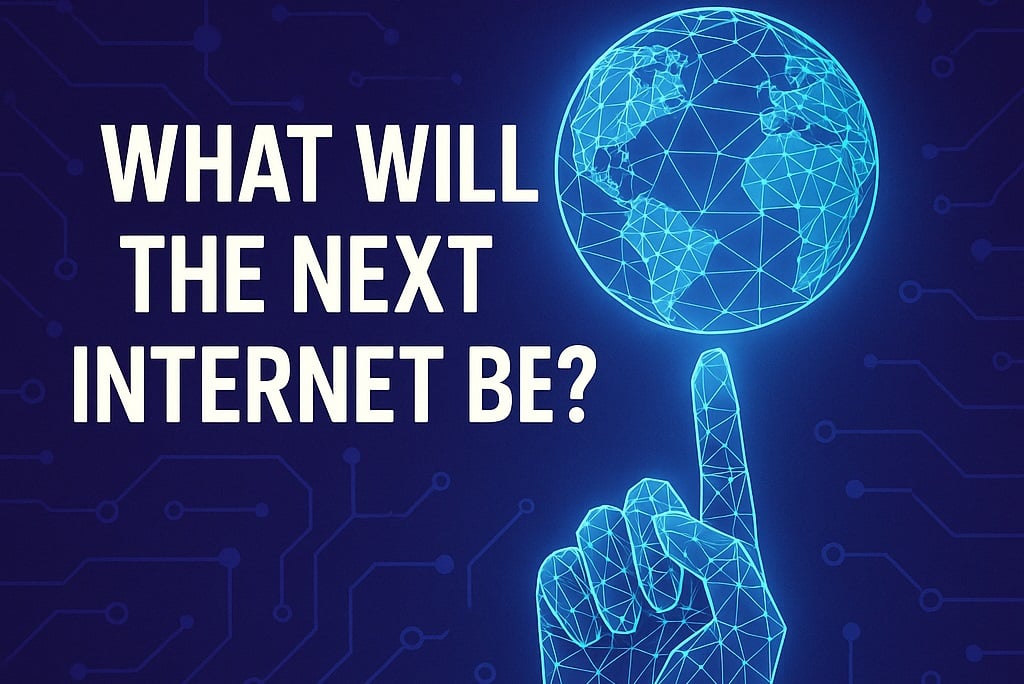Jun 27 , 2025

From streaming to clicking, we’ve done it all in this day and age of the internet; however, what is coming next could surpass anything we have ever seen.
This century has introduced blazingly fast internet and constant video calling. From the days of dial-up to now, nothing has transformed our lives as rapidly as the internet itself. However, people are asking what the next ‘thing’ will be. It cannot be the metaverse or AI. That leaves the question of whether we are bold enough to think of other possibilities..
Think about how fast digital habits have changed. Ten years ago, betting on sports meant phone calls or shady websites. Now, thanks to smarter design and real-time connectivity, platforms like online betting India make placing a wager on your favorite team just as smooth as ordering food or booking a cab. It’s sleek, quick, and deeply integrated into how users interact with entertainment today.
That’s just a taste of how the internet constantly shifts to meet our behavior. And the next wave? It’ll be even bigger.
What’s coming next won’t be another version of a web browser or a more polished app. It’s going to be a full shift in how we experience the internet. It won’t feel like “logging on” — it’ll feel like stepping inside.
We’re already seeing early pieces of this shift:
Virtual spaces where people hang out, work, and play
AI systems that write, draw, solve problems, and even teach
Tech that adapts automatically to your preferences, routines, and needs
Apps and platforms that blur the line between digital and physical spaces
Some call this Web3. Others talk about the metaverse. But labels aside, the idea is simple: the next internet will feel more alive, more personal, and less like a screen between us and the rest of the world.
Let’s break it down. If the last 25 years were about getting connected, the next 25 could be about changing what connection feels like.
In short: you won’t just look at websites — you’ll live inside them.

Right now, big companies like Meta, Google, Apple, and Microsoft are racing to create immersive tech that blends digital and physical spaces. But they’re not alone. Independent developers, crypto communities, and AI engineers are all putting together the puzzle pieces of the next internet — and sometimes, they’re moving faster than the giants.
And then there are the brands and services adapting early. Take MelBet India Instagram — they’re not just creating content anymore; they’re building a digital space where users interact live, follow updates in real-time, and feel like part of a bigger community. That’s exactly the direction the internet is heading: immersive, fast, and community-driven.
Picture the morning routine of the future - waking up and slipping on a set of smart glasses instead of reaching for your phone. Your calendar is visible next to a hologram of your friend video calling you from another city, with whom you can chat in real-time. Rather than scrolling through a series of texts cut out from images of rooms, you can talk to AI, sound, and sight, and engage with lifelike digital environments in which you can play, shop, and work.
Need support completing a task? There is an AI assistant available who can guide you step by step, and you can even customize their appearance and voice. Want to check out a live event happening somewhere across the globe? No issue! You can instantly teleport to the event with your friends irrespective of where they are; no need to shell out money or waste time stuck in traffic.
This is a world in which technology adapts itself to people instead of vice versa.
Probably not immediately. The initial pioneers of a major technological shift always lag behind the early adopters. Some people will go out of their way to interact quickly, like young consumers for whom mobile devices and interfaces are second nature. Everyone else will sit back for smoother, better devices, apps, and a new reason for interest.
People will use it, just like smartphones, streaming services, and social media, as soon as they become useful. Out of all the numerous examples, no one needed a touchscreen until they got a try, and no one required an app for everything until they realized it could save them hours.
Thus, the burning question isn’t whether the next frontier of the internet is coming—it is how quickly we would want to join it as soon as experiences begin to improve.
Let’s be real: this future won’t be perfect. There are real concerns we’ll need to figure out, such as:
Privacy: Who controls the data in these new environments?
Access: Will everyone benefit, or just those who can afford the tech?
Identity: How do we protect ourselves in fully virtual spaces?
Overload: What happens if digital life becomes more real than real life?
These questions aren’t dealbreakers — they’re just challenges. And if the past few decades tell us anything, people are pretty good at adjusting once they see the upside.
Here’s the funny part: we may not even call it “the internet” in a few years. It’ll be something bigger — something woven into daily life so deeply, we stop thinking of it as something separate.
It could be voice-driven. It could be visual. It might exist in 3D, use blockchain under the hood, and be managed partly by AI. But whatever form it takes, one thing’s certain: it’ll make today’s web look like a warm-up.
So, next time you tap through your favorite app or place a bet during a live game, remember — this isn’t the finish line. It’s just a preview of what’s next.